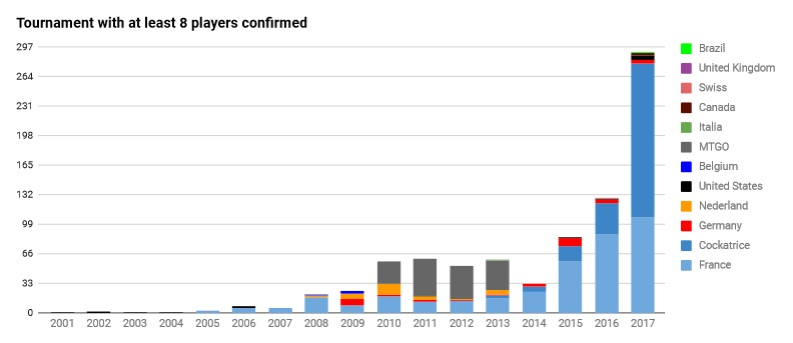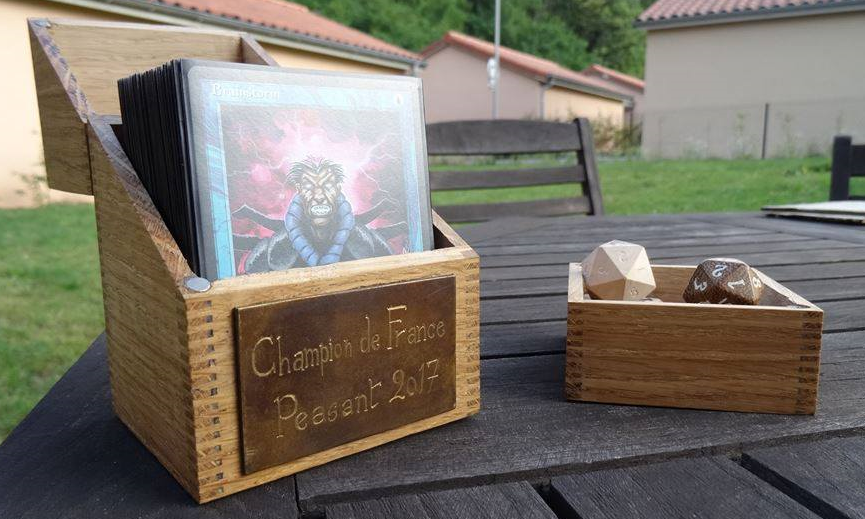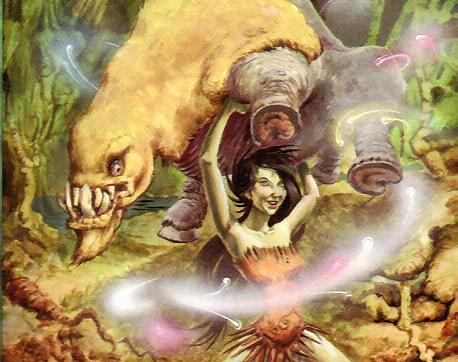Vi lascio a Zombie33, con il quale mi scuso del colpevole ritardo con il quale è avvenuta la pubblicazione. Vi invito a esprimere un feedback riguardo questo esperimento, e se è di vostro gradimento a sostenerlo e condividerlo.
Buona lettura!
The story so far
Hi everybody!
This article is an introduction to the Peasant format. And what can be possibly better to start this article than a story?
Our story start in 2001. It’s quite a coincidence because it was that year, Wotc created the first flashback cards in Odyssey. In 2001, magic was very different. Most of your favorite magic websites didn’t exist, even the Gatherer or MTGO didn’t exist yet. By then, Magic was already an expansive game. An American arbiter called Robert Baronowski decided to create a new Magic format, cheaper than every other. A format without all this expansive rare cards. A format which allows only commons and 5 uncommons. The name of this format was selected after a movie: Big Trouble in Little China. In this movie there’s a funny magic fight scene where Lo Pan (the villain) says to his opponent the evilest insult you can imagine : “Peasant Magic!”.
Peasant was born.
The same year, the first Peasant tournament was organised as an event at Gen Con. This tournament is still the biggest of the format, with 128 players. In 2002 the second Peasant event at GenCon brought back more than 90 players. Meanwhile Pauper was born.
Finally Peasant came to Paris in 2005 and, in the next years, the American community collapsed as the French growed.
In 2008, Wizard of the Coast created MTGO and made Pauper an official format. Pauper became suddenly more popular than Peasant, even if for three years Peasant tournaments were also organized on MTGO. This was a strange period for Peasant, because at this time there were simultaneously 4 different ban lists.
The rebirth of the format was in 2015, when we finally unified all the Ban Lists. Until 2017 the format had an exponantial growth as you can see below:

Differences between Pauper and Peasant – the metagame
Well, surprisingly, only 5 additional uncommons per deck are enough to create a very different metagame. To be accurate, some illegal commons cards in Pauper are authorised in Peasant: Hymn to Tourach, Desert, High Tide, Goblin Grenade, Invigorate and Cloud of Faeries. With all this differences, they are many competitive archetypes in Peasant who simply don’t exist in Pauper.
Here a non-exhaustive list of competitive peasant decks:
• Familiar: An old Pauper archetype who vanish after the ban of Cloud of Faeries.
• Storm: Peasant have still access to an uncommon storm spell: Hunting Pack.
• Reanimator: We have some big Eldrazi, but also Reanimate in Peasant. Say no more!
• Thopter Combo: Thopter Foundry and Sword of the Meek together are strong enough to create an archetype in Peasant.
• Oketra: A control-combo deck based on creatures. This is the curious description of this deck based on an uncommon: Oketra’s Monument.
• Smallpox: Of course when you can play 4 Smallpox and 4 Sinkhole in the same deck, land
destruction become competitive.
• Spiders: A deck based on a graveyard full of creatures and Spider Spawning
Another important difference between the two format is about the fundamental turn, which is the 3rd for Peasant and the 4th for Pauper. There are effectively two decks which have a fundamental turn 3 in the format: Infect (which can possibly win on turn 2) and Red Assault. I guess everybody can imagine what kind of deck is Infect, but Red Assault is less popuplar. It’s a budget modern deck, and this variation is, basically a mono-red Kiln Fiend deck with 4 Monastery Swiftspear.
Of course many pauper deck have their peasant variation with a specific uncommon which makes the deck better. Ghirapur Aether Grid in Affinity; Curse of Predation in MGA (Stompy. NdR); Palace Jailer in Boros Monarch etc…

Why 5?
Finally, I want to say a word about this curious limitation of 5 uncommons. This rule was imagined to force players to play at least 2 different uncommons and to makes deckbuilding more tricky. Peasant is famous for his split of uncommons who can be really hard to make. In fact we can find in the competitive archetypes almost three different ways to split: 4-1, 3-2 and 2-2-1.
Is it a format I can play competitively or is it just fun?
Well it depends on what you want. In this actual form, peasant is still a young format, but if you want to play peasant competitively you can. We have already a big annual tournament called: Coupe de France (French Cup). 117 players partecipated to the French Cup 2017, and we expect even more players for the French Cup 2018 in October. We also organize a lot of online tournament on Cockatrice, open to everyone.
If you want to see some competitive decklist, and some stats of the format, you can use the following links:
– https://mtg-peasant.com/home/
– http://www.mtgtop8.com/format?f=PEA
– http://www.magic-ville.com/fr/forum/index.php?themecode=pea (French)

But Peasant is also fun. Peasant is unofficial, so this format lives only because of his players’ devotion. The peasant spirit is quite close to the paper Pauper spirit in fact. In the prizes of the French Cup you can find of course some expansive spoiler of Magic, but also some dices and deckbox in wood, a real cup in wood, some promotionnal tokens and the original painting used for those tokens. We can also actually see the fun of the format with the side events organised each years in the French Cup: Commander Peasant, Tiny Leaders Peasant, Cube Peasant, Two Headed Giant Peasant…

See you soon for another article about Peasant.
Written by Jérémy B. a.k.a. Zombie33, member of the peasant council.

